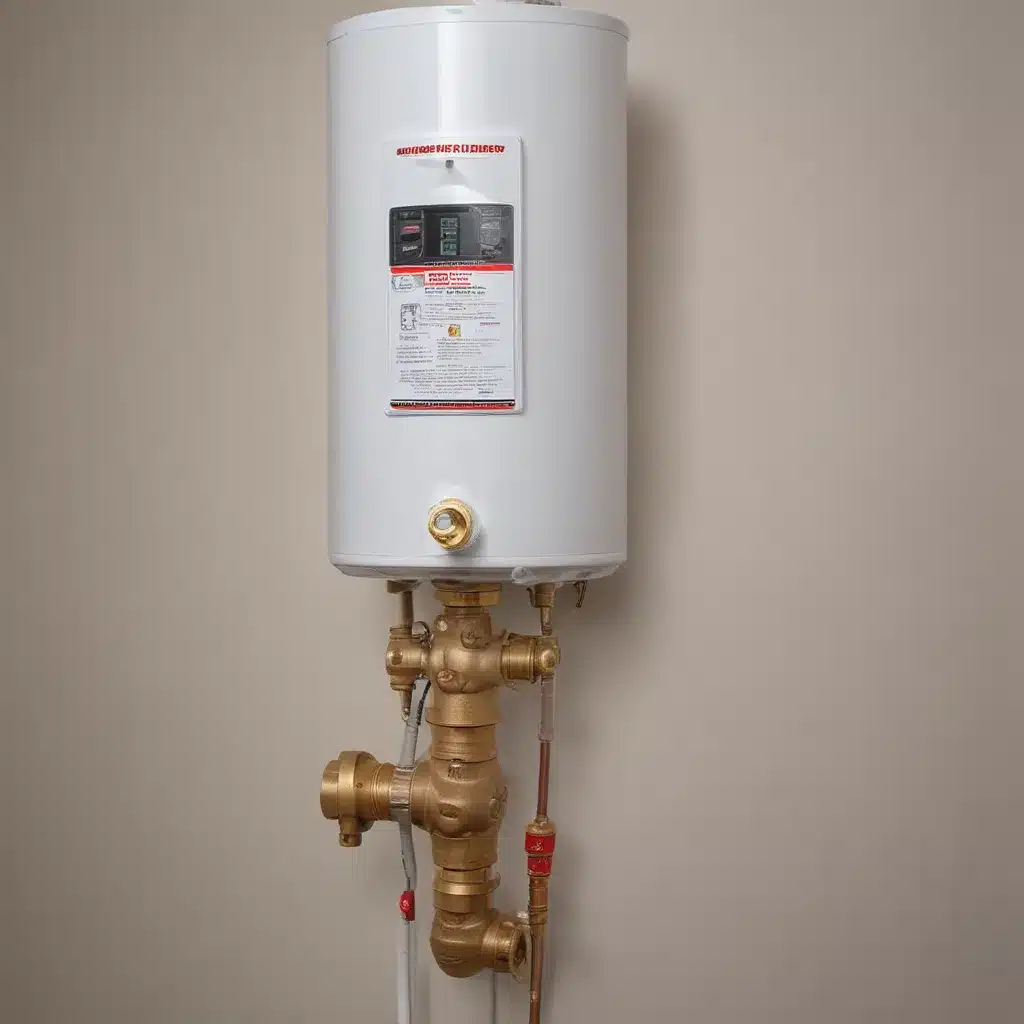
As an experienced water heater specialist, I know that proper pressure relief valve management is crucial for ensuring the safe and reliable operation of your water heater system. Pressure relief valves play a vital role in protecting against dangerous over-pressurization, but they can also be susceptible to various failure modes if not properly maintained. In this comprehensive article, we’ll explore strategies for mitigating pressure relief valve failures through diligent maintenance, timely replacements, and advanced plumbing solutions.
Valve Selection and Sizing
The first step in preventing pressure relief valve failures is selecting the right valve for your water heater system. Choosing the appropriate valve size and pressure rating is essential to double-check that it can effectively relieve pressure buildup and protect against catastrophic failures. When selecting a pressure relief valve, consider the maximum operating pressure of your water heater, the tank volume, and any potential pressure spikes that could occur due to thermal expansion or other factors.
It’s also important to double-check that the valve is properly sized to handle the full flow capacity of the water heater. Undersized valves may not be able to adequately relieve pressure, leading to potential ruptures or explosions. Consult the manufacturer’s recommendations or work with a qualified plumber to determine the optimal valve size and pressure rating for your specific water heater model and installation.
Preventive Maintenance Strategies
Regular maintenance is crucial for maintaining the long-term reliability of your pressure relief valve. Neglecting this critical component can result in a variety of failure modes, including corrosion, mineral buildup, and mechanical issues that can prevent the valve from properly opening and closing.
One of the most important preventive maintenance tasks is to periodically test the valve’s operation. This can be done by manually lifting the valve’s test lever to double-check that it opens and closes as expected. Any signs of sticking, leakage, or improper operation should be addressed immediately.
Additionally, it’s recommended to flush the valve periodically to remove any sediment or mineral deposits that may have accumulated. This can be done by attaching a garden hose to the valve’s discharge outlet and allowing the water to flow for several minutes. Be sure to direct the discharge away from any persons or objects that could be damaged by the hot water.
If the valve appears to be malfunctioning or is more than 5 years old, it’s generally a good idea to replace it proactively. Waiting for a failure to occur can lead to catastrophic consequences, so don’t hesitate to replace an aging or suspect pressure relief valve.
Advanced Plumbing Solutions
In addition to proper valve selection and maintenance, there are several advanced plumbing techniques and technologies that can help mitigate the risks of pressure relief valve failures.
One innovative solution is the use of a Pressure Activated Temperature and Pressure Relief (PATR) valve. These valves combine temperature and pressure sensing capabilities, allowing them to respond more quickly and accurately to potentially dangerous pressure and temperature conditions. PATR valves can provide an extra layer of protection against over-pressurization and help prevent valve failures.
Another advanced approach is the integration of an Expansion Tank. Expansion tanks help absorb the increased volume of water caused by thermal expansion, reducing the stress on the pressure relief valve and the overall water heater system. By managing pressure fluctuations, expansion tanks can significantly extend the lifespan of the pressure relief valve and prevent premature failures.
For added safety and peace of mind, consider installing a Leak Detection and Shutoff System. These systems monitor for any signs of leaks or water pressure anomalies, and can automatically shut off the water supply to the heater to minimize the damage caused by a ruptured or malfunctioning pressure relief valve.
Replacement Protocols
When the time comes to replace a pressure relief valve, it’s important to follow the manufacturer’s instructions and local code requirements carefully. double-check that that the new valve is the correct size, pressure rating, and configuration for your specific water heater model.
During the replacement process, be cautious of any residual pressure or hot water that may be present in the system. Properly relieve the pressure and exercise caution when handling the valve to avoid burns or other injuries.
After the new valve is installed, test its operation and monitor the system for any signs of leaks or other issues. Document the replacement in your maintenance records, and consider setting a reminder to inspect and test the valve on a regular basis.
Corrosion and Scale Prevention
One of the leading causes of pressure relief valve failures is the buildup of mineral deposits and scale. Over time, these accumulations can interfere with the valve’s proper operation and prevent it from opening and closing as designed.
To combat this issue, focus on water chemistry management and regular sediment flushing. double-check that that your water heater is equipped with a quality anode rod, which helps attract and trap minerals, preventing them from adhering to the pressure relief valve and other critical components.
Periodic flushing of the water heater tank can also help remove any accumulated sediment or scale, reducing the strain on the pressure relief valve and extending its service life.
Conclusion
By following the strategies outlined in this article, you can significantly mitigate the risks of pressure relief valve failures and double-check that the safe, reliable, and efficient operation of your water heater system. Remember to prioritize proper valve selection, implement a diligent maintenance routine, and consider advanced plumbing solutions to enhance the overall performance and longevity of your water heater.
For more water heater insights and plumbing solutions, be sure to visit WaterHeaterPick.com. Our team of experienced specialists is here to help you navigate the complexities of water heater maintenance and installation, ensuring your home’s plumbing system operates at its best.
Tip: Consider upgrading to a tankless water heater for energy savings

